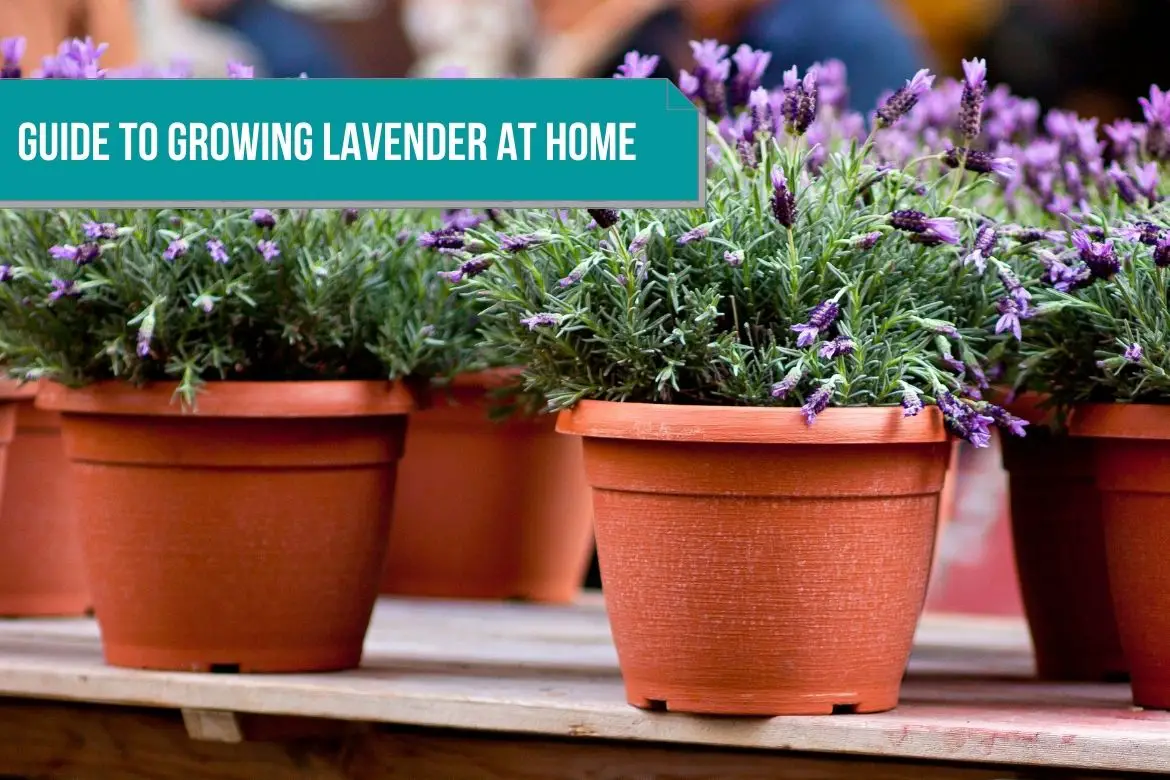
Botanical name : Lavandula angustifolia
Flavor Profile : Floral and sweet with slight bitterness. Undertones of mint and citrus
Lavender (Lavandula angustifolia), a subshrub native to the low mountains of Mediterranean basin, is aromatic and herbaceous. It is commonly known as English lavender.
Adding lavender flowers to jams, ice creams, vinegars, and herbal teas enhances their flavor.
A variety of food products use lavender oil as a flavoring agent, including beverages (both alcoholic and non-alcoholic), aromatic vinegars, baked goods, candy, frozen dairy desserts, gelatins, and puddings.
Many cosmetics, shampoos, and industrial products contain the aromatic oil of lavender because of its soothing fragrance.
In traditional Provençal cooking, lavender is a key ingredient. The flowers as well as leaves of English lavender can be used for cooking.
Lavender leaves can be used for savory dishes as an alternative to rosemary, while vibrant purple flowers make a beautiful garnish for salads and a decorative addition to cakes, pastries, and champagne flutes.
Note: Lavandula angustifolia is the only lavender group which can survive winters.
Categories of Lavender
On the basis of origin, plant type, and variety, lavenders are divided into four main categories :
- Lavendula angustifolia (Lavendula officinalis syn .) – English lavender and formerly known as Lavendula vera
- Lavendula stoechas
- Lavendula latifolia – Spike lavender
- Lavendula hybrida (Lavendula intermedia, syn.) – Lavandin
Health benefits of Lavender
The essential oil of lavender is distilled from the lavender flower and has anti-inflammatory, antiseptic, antibacterial, antifungal, antimicrobial, and antidepressant properties.
It stimulates urine production and improves digestion, reduces emotional stress and anxiety, heals wounds and burns, improves sleep, reduces eczema and psoriasis, reduces acne, and improves skin complexion.
Aromatherapy also makes use of lavender.
As a tea, lavender can be consumed to treat digestive issues like vomiting, nausea, intestinal gas, upset stomach, and abdominal swelling.
In addition to these benefits, it also helps relieve pain from headaches, sprains, toothaches, and scores.
Lavender is a decent source of vitamin A, iron and calcium.
How to grow Lavender indoors
Adding a stunning display of colors, its bright purple or blue-purple blooms and grayish-green stems make lavender a welcome addition to any home garden or container garden.
Among the lavender varieties available are English, Spanish, French, dwarf and ones with pink or white flowers.
You can plant lavender in spring and summer seasons. However, in dry and hot areas, you can try planting lavender in early fall. By this plant will have more time to establish before the arrival of the first frost.
Recommended lavender varieties to grow
- Lavandula Angustifolia – Hidcote, Lavenite Petite, Little Lottie, Melissa Lilac, Miss Katherine, Munstead, Nana Alba, Rosea, Thumbelina Leigh
- Lavandula Stoechas – Anouk, Ballerina, Fathead, Kew Red, Pretty Polly, Regal Splendour
Plant size
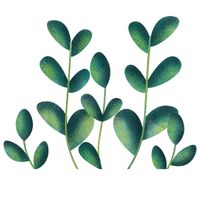
Some varieties can be 18 inches in length. However some varieties can be as tall as 1 – 3 feet ( 12 – 36 inches or 30 – 90 cm)
Container / pot Size

The container size for growing lavender depend on the type of the lavender variety.
In case you are planning to plant a dwarf variety (which grows 18×18 inches in size), a container with 10.5-12.5 inch 27 – 32 cm approx) width will do fine.
For lavender varieties which grow 36×36 inches in size, go for a 22-26 inch (55 – 66 cm)pot.
Also look for a deeper container if possible. General thumb rule you can follow is don’t opt for any container which is less than 3 gallons (11-12 liters).
Refer how to choose the right container for your indoor plants for more details.
Sunlight
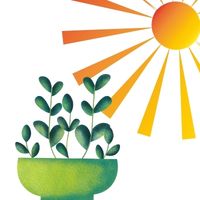
Full Sun. 6 hours or more of direct sunlight.
Lavender plant thrives in a temperature range of 40-65 degrees Fahrenheit (5-18 degrees Celsius).
For best results in growing Lavender indoors, place the container near a large south facing window. Or you can place the container near east or west facing windows. Placing under a skylight under direct sun is also a good option. West , east or south facing windowsills are also good provided it is strong and big enough to support big containers.
Refer Best locations and Light requirements for indoor plants for more details.
Soil

Well drained, loose, deep and chunky potting mix.
In case you are planning to use soil from you garden, go for any soil as long as it drains well.
Avoid waterlogged soil.
Refer types of soils for gardening for more details.
Lavender thrive on a soil with pH range 6.5 to 8 (slightly leaning towards alkaline side).
I can only recommend the use of compost in areas where the climate is dry.
In locations where the climate is humid or cold do not use compost as it might lead to soil will excess moisture which is not good for lavender plant.
In dry areas, you can either mix compost in the potting soil at the ration of 30:70, or, you can use compost as a top dressing on the container.
Please refer How to get the right potting mix for your container plant for more details.
Sowing
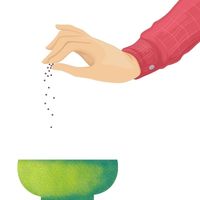
Lavender can be planted using seeds and also root cuttings.
Lavender seeds are very tiny (much like mustard seeds) as compared to other annuals. They also do not need any per-treatment before sowing. And, they require light to germinate.
For planting lavender using seeds, you can use seed trays or you can directly seed them in a container. Remember, the seeds are very small. Just try and pinch as few seeds as possible between your thumb and finger and drop them on the potting mix. Use a stick (resembling the thickness of a pen or skewer) to gently push the seeds in the soil almost 3 mm deep.
In 10-14 days you will see small lavender seedlings germinating from the potting mix.
For planting lavender using cuttings, select a plant which is still growing but has not entered flowering mode. The best option for taking stem cuttings for planting lavender is choosing a plant which is still in its vegetative mode.
Avoid taking stem cuttings from a plant which is kind of dormant (no new fresh stems with a lot of over winter growth). Also, avoid taking stem cuttings from lavender plant which is flowering as it doesn’t have the right amount of growth hormones and the distance between the inter-nodes is quite big. Flower stems are not a great option for stem cuttings.
Cut a stem from the lavender plant. Snip the stem right below the soft internode. Don’t cut at the woody internode. Almost an year old nodes are woody nodes with a dark brown color. Snip the stem from the top so that there are just 2-3 nodes left in the stem. Now remove the bottom leaves from the stem. At the end, your stem cutting will look like a small green stem with just 2-3 green leaves on the top.
Now dip it in rooting hormone powder and put it in the potting soil.
You can use 0.1% IBA. However, depending on you experience, you can also opt for 0.3% IBA. I wont recommend going above that.
Keep the pot or the tray of the stem cuttings in a room with a steady temperature of about 70 degree Fahrenheit (21 degree Celsius).
Also, try and keep the stem cuttings pot in a humid are so that the fresh sown stem cuttings don’t wilt. Cover the pot with a plastic box with some holes in it to maintain the humidity. You can also mist the plants with a spray bottle.
With good light and humidity, you should see 2-3 inch roots from the cutting in about 10-14 days.
After 14 days move the plant to a different location without humidity. This will harden the plants and you can also check if the plant is good for long term. In case you observe any yellowing or wilting, that means the plant is not strong enough.
Quick tip: Lavender stem cutting is a better method than using seeds to grow lavender plant. You get better quality and speed by using stem cutting method.
Watering
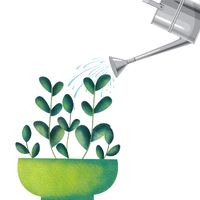
Lavender plants are drought tolerant. However, this theory only applies to lavender plants which are established and are planted in the ground.
The drought tolerant theory most certainly doesn’t apply to lavender plants which are planted in containers.
Lavender has an extensive wide spread root system.
Water lavender plant regularly till its not established.
Avoid water logging the potting mix. Lavender can not tolerate any standing water or waterlogged soil.
Quick tip: Lavender is an easy plant to grow. In case you are getting confused about watering, just remember the signs of water stressed lavender: wilting, yellowing and the grayish foliage will loose its gloss and will start looking thin and dull. Whenever you see these signs, water the plant.
Lavender plant will become established in about 5 months after planting. So. for example, if you plant the lavender plant in April, the plant will reach a somewhat established state in about August.
After establishing, you will not have to worry about watering that much. In the subsequent years, the lavender plant will become even more established and drought resistant.
Make some drainage holes at the bottom of the container to drain the water just in case excess water is used while watering lavender.
Refer How to make drainage holes on potting container for more details.
Harvesting

Lavender will take about an year to before it can be harvested. However, in almost 3 years, lavender reaches its peak.
Harvest the flowers just before they open completely, in spring or summer season.
Harvest the leaves when ever you want.
Quick tip : After every harvest season (when you have harvested the flowers), no matter how tall your lavender grows, cut the plant back to a height between 6 – 9 inches.
This practice will not only encourage the lavender plant to grow more healthy stems but also prevent it from turning its lover stems woody.
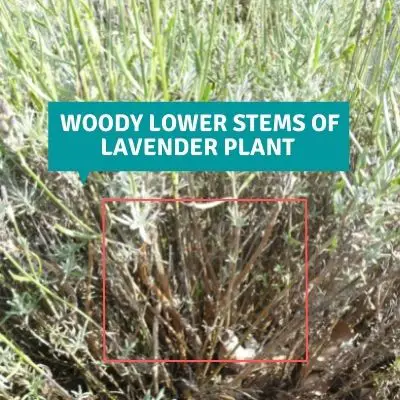
Plant care
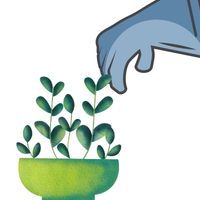
If you want a lush lavender plant with a branched out lower half, prune 1/3 to 1/2 of the plant when it reaches a height of almost 4-5 inches. In about a week you will see the difference. Fresh new spreading growth will come from he lower part of the plant and you will see the top of the plant more branched out.
Do the same pruning after a month also. You will observe even more branching.
If you can, you can also use a topdressing of fertilizer over the pot. This will encourage even more vigorous growth. In early spring, a single feed of balanced fertilizer can be applied.
Watering along with pruning play a crucial part in a dense and healthy growth of the plant.
SUBSTITUTES FOR LAVENDER IN THE KITCHEN
- Hyssop
- Rosemary
- Chamomile
- Elderflower
- Rose
How to keep Lavender fresh
The leaf of lavender can be stored in a glass of water in a cool place, or wrapped in lightly damp paper towels in the refrigerator.
It is possible to dry lavender. If you want to dry lavender, tie a string near the bottom of the stem and hang upside-down until it dries.
After drying, place the lavender in an airtight container to prevent the oils from escaping.
Please refer to how to store herbs and spices for more details.
How to use Lavender in the kitchen
In addition to adding an elegant floral component to sweet and savory dishes, lavender adds an elegant floral dimension to fruity desserts, rich roasts, and sweet-savory combos.
You can use fresh or dried flowers in baked desserts, custards, ice creams and sorbets, fruit jams and compotes, lemonade and ice tea, and honey and chocolate. Additionally, they can be used in syrup or milk infusions.
Use it in stews, rice, sauces, and marinades, as well as with roasted lamb, pork, and chicken.
You will notice that a little bit of lavender packs a lot of flavor, so start with a small amount and add more to your taste.
Dishes that go well with Lavender : Salads, roasts, sauces, rice, marinades, ice cream, dressing, stews, jams, custard, tea, cake.
Preparation of Lavender for food : To use flowers, snip the stems of the flowers right after the bloom.
In your recipes, chop leaves and flowers or use them whole.
Lavender flowers are ground into powder to make lavender sugar.
Pairing Lavender with food
Seasonings that go well with Lavender :
Parsley, basil, vanilla, marjoram, garlic, ginger, lemon juice and zest, perilla, fennel seeds, cinnamon, cloves, fennel, oregano, rosemary, honey, thyme, mint, sage, pepper, savory, rose.
Fruits and Vegetables that go well with Lavender:
Potatoes ( White Potato, Red Potato, Russet Potato, Purple Potato ), tomatoes, onions, carrots, beets, celery, oranges, berries ( blueberry, elderberry, blackberry, cranberry ), lemon, onion, cherries, apple, pears, rhubarb, apricots, shallots, figs, plums, peaches.
Proteins that go well with Lavender :
Lamb, Eggs, salmon, mascarpone, cheeses, cream cheese, rabbit, chicken, goat cheese, nuts.

